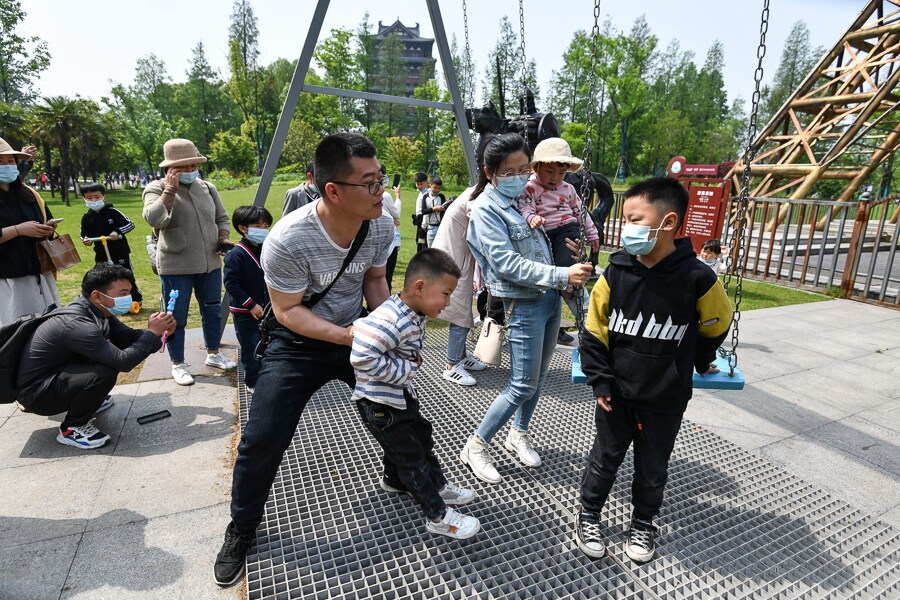
China's births hit historic low, a political problem for Beijing
China's ruling Communist Party has taken steps to address the birthrate decline, by relaxing its notorious "one child" policy, first allowing two children in 2016 and as many as three since last year
 Families at the Fuyang ecological park, China. The "cliff like" decline of China's birth rate has once again become a social concern.
Families at the Fuyang ecological park, China. The "cliff like" decline of China's birth rate has once again become a social concern.
Image: Sheldon Cooper/SOPA Images/LightRocket via Getty Images
As China announced on Monday that its birthrate plummeted for a fifth straight year in 2021, the world’s most populous country moved closer to the potentially seismic moment when its population will begin to shrink, hastening a looming demographic crisis that could undermine its economic vitality and even its political stability.
The falling birthrate, coupled with the increased life expectancy that has accompanied China’s economic transformation over the past four decades, means the number of people of working age, relative to the growing number of people too old to work, has continued to decline. That could result in labor shortages, which could hamper economic growth, and reduce the tax revenue needed to support an aging society.
The situation is creating a huge political problem for Beijing, which is already facing economic headwinds. Along with the demographic data, the country reported on Monday that growth in the last quarter of the year slowed to 4%.
China’s ruling Communist Party has taken steps to address the birthrate decline, by relaxing its notorious “one child” policy, first allowing two children in 2016 and as many as three since last year. It is also offering incentives to young families and promising improvement in workplace rules and early education.
©2019 New York Times News Service







